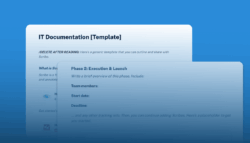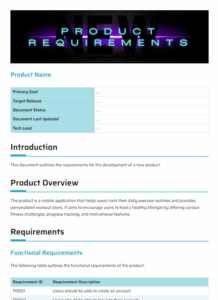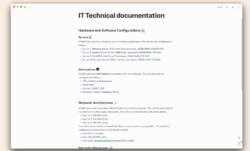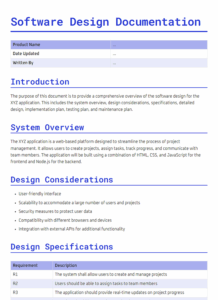So, you’re tackling system integration. That’s fantastic! But before you dive headfirst into connecting different software and hardware components, let’s talk about something crucial: documentation. Yes, I know, documentation isn’t always the most exciting part of any project. However, having clear, concise, and well-organized system integration documentation is the key to smooth implementations, easier troubleshooting, and long-term success. Think of it as a roadmap for your integration journey, guiding you every step of the way.
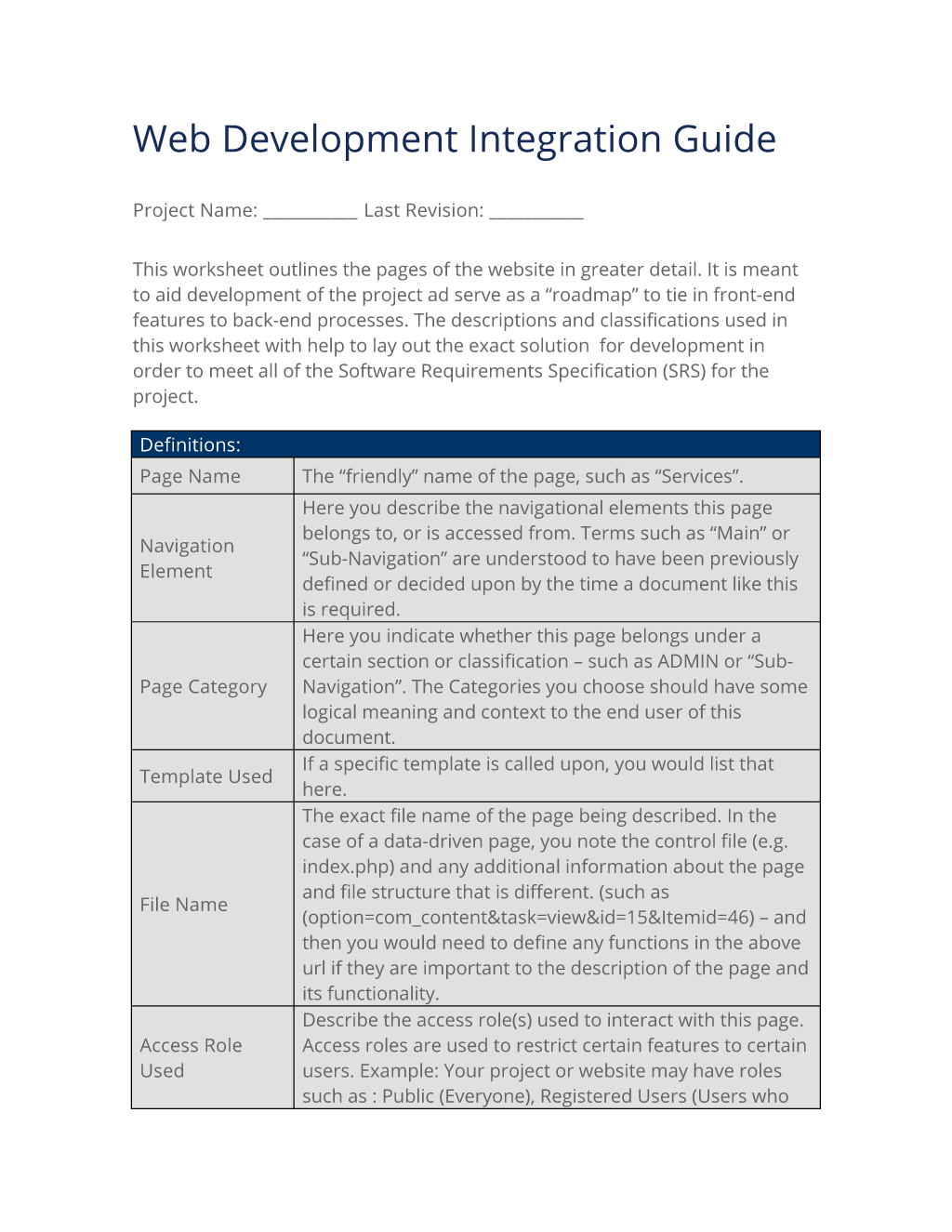
Without proper documentation, you’re essentially navigating a complex system blindfolded. Imagine trying to debug an issue months or even years after the integration, without any record of the design decisions, configurations, or dependencies. Sounds like a nightmare, right? This is where a comprehensive system integration documentation template comes in handy. It provides a structured framework for capturing all the essential information, ensuring everyone on your team is on the same page.
This article explores the importance of system integration documentation and how to create a robust template that works for you. We will also explore different components that should be included. By the end, you’ll understand the what, why, and how of creating effective system integration documentation so that you can create your own system integration documentation template.
Why System Integration Documentation is a Must-Have
Let’s face it: integration projects can be messy. There are different systems involved, multiple teams working on separate components, and a whole lot of moving parts. System integration documentation acts as a central source of truth, providing clarity and reducing confusion across the board. Imagine having all the specifications, configurations, interface details, and troubleshooting steps neatly organized in one place. This alone saves countless hours of searching through emails, chat logs, and outdated spreadsheets.
Beyond immediate time savings, documentation significantly improves the maintainability of your integrated systems. When someone needs to update, modify, or debug the system, the documentation provides a clear understanding of how everything works together. This reduces the risk of introducing errors or breaking existing functionality. Think of it as an insurance policy against future headaches. It also serves as a valuable training resource for new team members. Instead of relying on tribal knowledge or informal mentorship, new hires can quickly get up to speed by reviewing the documentation.
Properly documenting the system integration process also ensures regulatory compliance. Many industries have strict regulations regarding data security, privacy, and system reliability. Documentation helps you demonstrate that you’ve taken the necessary steps to meet these requirements. It provides an audit trail of all changes made to the system, allowing you to track compliance over time. This is especially important in industries like healthcare, finance, and government.
Furthermore, system integration documentation can greatly enhance collaboration. When different teams are involved in the project, documentation facilitates clear communication and reduces misunderstandings. It provides a common language and framework for discussing technical details and resolving conflicts. This can lead to faster problem-solving and more efficient project execution. Consider the scenario where the development team is working independently and the operations team is trying to deploy the new integration. With good documentation, the operations team knows exactly what to do and what potential issues to look out for.
Finally, and perhaps most importantly, documentation serves as a repository of knowledge. Over time, team members may leave the organization or move on to other projects. Without documentation, their knowledge is lost, making it difficult to maintain and support the integrated systems. Documentation ensures that this valuable knowledge is captured and preserved for future use, protecting your investment and reducing the risk of knowledge silos. This helps in developing a robust system integration documentation template.
Key Components of a System Integration Documentation Template
A comprehensive system integration documentation template should include several key components to provide a complete picture of the integrated system. Let’s break down some essential elements:
Integration Overview: This section provides a high-level overview of the integrated systems, including their purpose, scope, and objectives. It should clearly define the business goals that the integration aims to achieve and the benefits it will provide. This section should also include a diagram illustrating the overall architecture of the integrated system, showing the relationships between the different components.
System Requirements: This section details the technical requirements for the integrated system, including hardware, software, and network requirements. It should specify the minimum and recommended system configurations for each component and the compatibility requirements between different systems. This section should also address security requirements, such as authentication, authorization, and encryption.
Interface Specifications: This section provides detailed specifications for each interface between the integrated systems. It should include information about the data formats, protocols, and APIs used for communication. This section should also document the error handling mechanisms and the procedures for resolving interface issues. Clear interface specifications are crucial for ensuring smooth data exchange and preventing integration errors.
Configuration Management: This section describes the configuration management process for the integrated system, including the tools and procedures used for managing configurations. It should specify how configurations are versioned, stored, and deployed. This section should also address configuration rollback procedures in case of errors or failures. Effective configuration management is essential for maintaining the stability and reliability of the integrated system.
Testing and Validation: This section documents the testing and validation procedures used to ensure the quality of the integrated system. It should include test plans, test cases, and test results. This section should also address performance testing, security testing, and user acceptance testing. Thorough testing and validation are critical for identifying and resolving defects before the system is deployed to production.
Deployment Procedures: This section describes the step-by-step procedures for deploying the integrated system to production. It should include information about the deployment environment, the deployment tools, and the deployment timeline. This section should also address rollback procedures in case of deployment failures. Clear deployment procedures are essential for minimizing downtime and ensuring a smooth transition to production.
Troubleshooting Guide: This section provides a comprehensive guide for troubleshooting common issues in the integrated system. It should include information about the symptoms, causes, and solutions for each issue. This section should also provide instructions for collecting logs and diagnostic data. A well-written troubleshooting guide can significantly reduce the time and effort required to resolve system problems.
Maintenance and Support: This section describes the maintenance and support procedures for the integrated system. It should include information about the schedule for routine maintenance, the procedures for applying updates and patches, and the contact information for support personnel. This section should also address disaster recovery procedures in case of major system failures. A robust maintenance and support plan is essential for ensuring the long-term availability and reliability of the integrated system.
These are just some of the components that should be included in a system integration documentation template. The specific components that you include will depend on the complexity and scope of your integration project.
Creating and maintaining robust documentation isn’t always easy. You need to dedicate time and resources to the task, and you need to ensure that the documentation is kept up-to-date. However, the benefits of doing so far outweigh the costs. With clear, comprehensive documentation, you can ensure that your integration projects are successful and that your integrated systems are reliable and maintainable for years to come.
You can adapt and customize the template to fit your specific needs. The key is to make sure that the documentation is clear, concise, and easy to understand. It should also be easily accessible to everyone who needs it.
